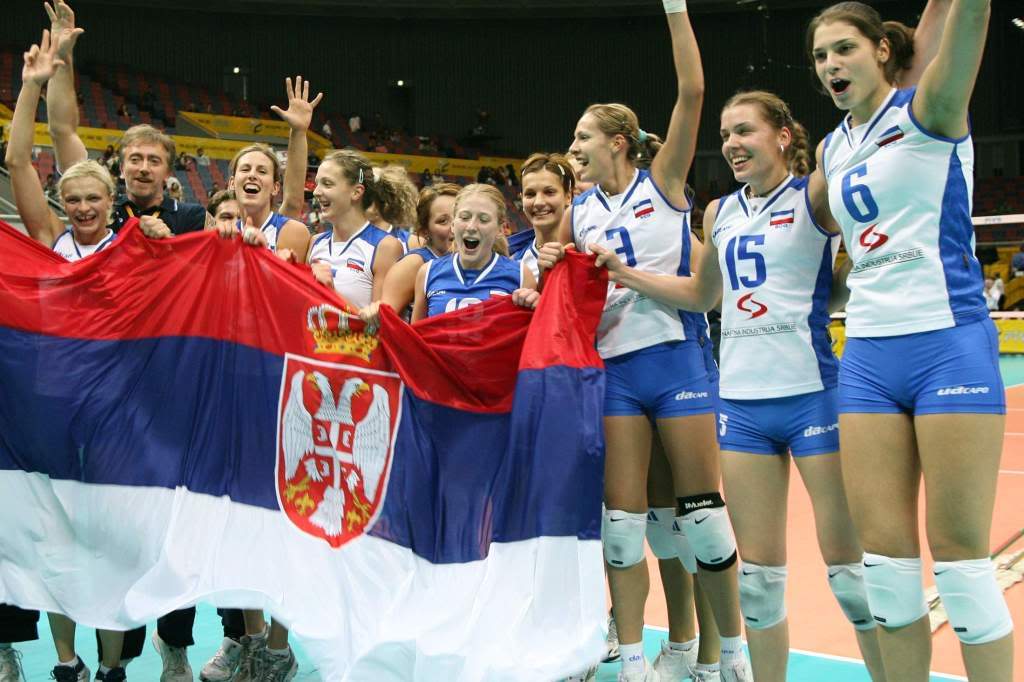In late November, the suddenly-booming sporting metropolis of Baku, Azerbaijan hosted the draw for the 2017 CEV European Women’s Volleyball Championship. Azerbaijan and its neighboring nation of Georgia will co-host the 2017 championship, leaving a peculiar challenge in the draw.
The host nations automatically get top billing in their respective pools of the European Championships, and are also granted the right to choose the other two group headliners. The other three teams in each of the four groups are then chosen by a random draw, with nations stratified into tiers based on their current European rankings. The only exception is that the prior edition’s gold and silver medalists are put in different groups, so as to ensure the possibility of a championship rematch.
The challenge is that Azerbaijan doesn’t have a team worthy of a #1 seed, and Georgia doesn’t have a team that under any other circumstances would even be worthy of entry into this tournament. With all but the bottom team in each group advancing to the knockout stages (group winners get a bye in the first round), that means that Italy, Croatia, and Belarus, in the group with Georgia, will have nearly a free-pass through the group stage.
Azerbaijan’s group is quite so lenient, but still offers a less competitive group than groups C and D, where Russia and Serbia, respectively, are the top seeds. Russia and Serbia, ironically, won the same Groups C and D, respectively, in 2015.
Traditionally, the top spots in groups are awarded to the most deserving teams. In this case, the defending European Champions from Russia and the Olympic silver medalists from Serbia were given those spots. In this case, a more equitable choice would’ve been to choose the two worst teams in the tournament, aside from the aforementioned hosts, to assure a more equal distribution of teams of each quality.
That strategy, however, would’ve been self-destructive to the hosts, as Azerbaijan now has a slightly easier path to the knockout stages. So, tradition was adhered to, and the result was unbalanced groups.
POOL BY POOL BREAKDOWN (EACH COUNTRY WITH MOST RECENT FIVB WORLD RANK)
Group A: Azerbaijan (#24), Germany (#13), Poland (#22), Hungary (#33) Average Rank – 23
In spite of Azerbaijan, who was winless in group play in 2015, leading the way, the presence of Germany and Poland – both countries on the rise, helps balance this group a little. There’s no easy wins here, but also no monster team that can count on sweeping their way through group play. That will up the pressure as every set, and every point, could become crucial in determining who advances on a tie-breaker. Poland at 22nd in the World Rankings is underrated as they’re still feeling the impact of not qualifying for the 2014 World Championships. They were 14th at last year’s World Grand Prix and, when playing well, are the best 3rd-tier team in the tournament.
Group B: Georgia (#115), Italy (#8), Croatia (#18), Belarus (#44) Average Rank – 46.25
There’s not really much of a question about who will advance for this group; the battle is all for seeds and the 1st-round bye. Nobody in the group on paper will challenge Italy, who were 4th at the 2014 World Championships, though Croatia does have a 3-3 record all-time against them at the European Championships. With Belarus and Georgia being the two lowest-rated teams in the tournament, this one seems pretty easy to predict on paper: Italy takes the bye, followed by Croatia and Belarus who advance to the round of 16. Belarus and Croatia were in the same group in 2105, however, and that year, Belarus swept the Croatians 3-0.
Group C: Russia (#5), Turkey (#12), Bulgaria (#17), Ukraine (#33) Average Rank – 16.75
Russia leading Group C and Serbia leading Group D ensures that if the continent’s two best teams (and right now, there’s little debate that those two are it) match up in this tournament, it won’t be in the final unless one or the other slips-up and fails to win their group. In the 2015 tournament, Bulgaria went winless in group play and was eliminated. They did win 4 sets in the opening round in its two matches that weren’t against Russia, however, and with newcomers Ukraine in the group, they should feel better about their changes to advance.
Group D: Serbia (#3), Netherlands (#7), Belgium (#16), Czech Republic (#25) Average Rank – 12.75
The European Championships ‘Group of Death,” as the luck of the draw has it, Group D has the highest-ranked country in 3 of the 4 rounds (and second-highest ranked in the other). All four of the teams in this group advanced to the knockout stages in 2015, and two (Serbia and the Netherlands) actually won their groups the last time around. There’s a lot of history here too – in 2015, Belgium knocked the Czech Republic out of the tournament 3-1, and then the next day Serbia knocked Belgium out 3-1.

Leave a Reply